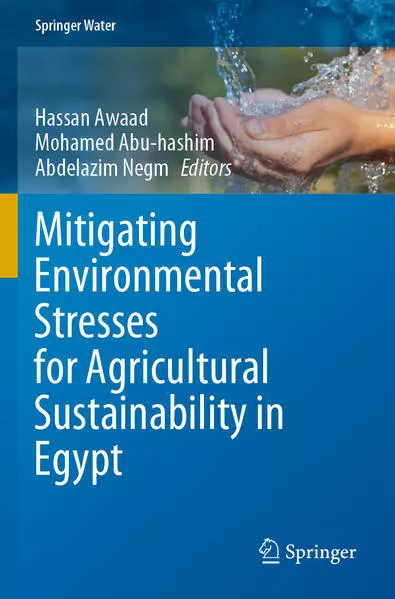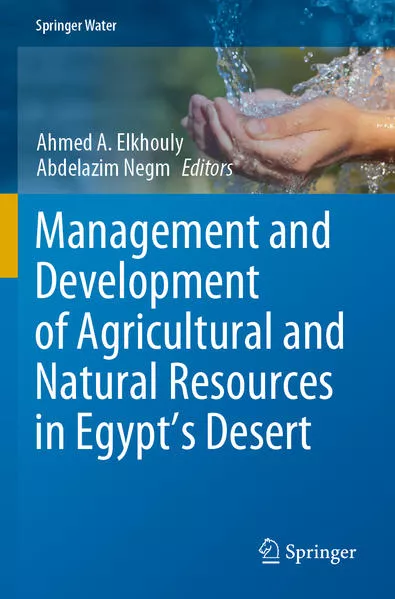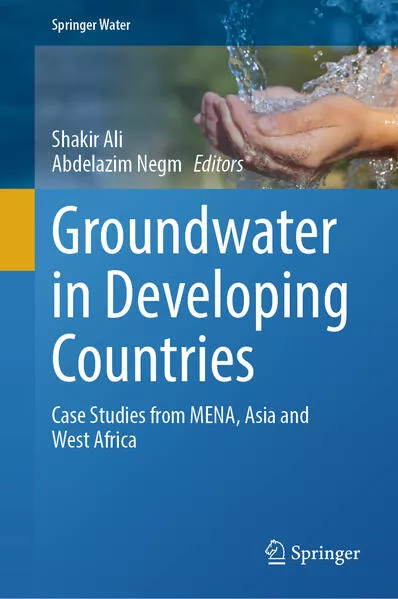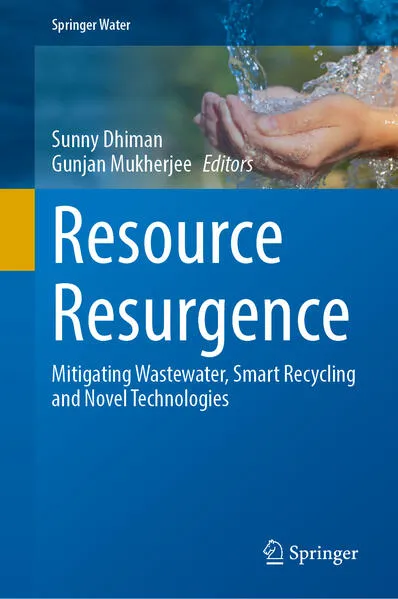Springer Water
Mitigating Environmental Stresses for Agricultural Sustainability in Egypt
Chronologie aller Bände (1 - 5)
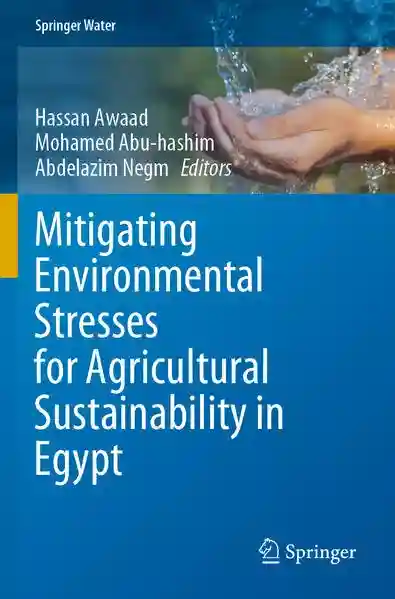
Die Reihenfolge beginnt mit dem Buch "Freshwater Challenges of South Africa and its Upper Vaal River". Wer alle Bücher der Reihe nach lesen möchte, sollte mit diesem Band von Anja du Plessis beginnen. Der zweite Teil der Reihe "Management and Development of Agricultural and Natural Resources in Egypt's Desert" ist am 02.06.2022 erschienen. Mit insgesamt 5 Bänden wurde die Reihe über einen Zeitraum von ungefähr 9 Jahren fortgesetzt. Der neueste Band trägt den Titel "Resource Resurgence".
- Anzahl der Bewertungen für die gesamte Reihe: 0
- Ø Bewertung der Reihe: 0
- Start der Reihe: 15.02.2017
- Neueste Folge: 18.10.2025
Diese Reihenfolge enthält 5 unterschiedliche Autoren.
- Autor: du Plessis, Anja
- Anzahl Bewertungen: 0
- Ø Bewertung:
- Medium: Buch
- Veröffentlicht: 15.02.2017
- Genre: Sonstiges
Freshwater Challenges of South Africa and its Upper Vaal River
This book promotes better understanding and awareness of South Africa' significant water problems by describing the country's and especially the Upper Vaal River’s water resources. It is a “go-to” book for students, professionals and regular citizens when information is required regarding the country's and more specifically the Upper Vaal River’s freshwater resources. It highlights the major problems and risks which need to be addressed and give a realistic and true representation of the current water affairs.
- Autor: Awaad, Hassan
- Anzahl Bewertungen: 0
- Ø Bewertung:
- Medium: Buch
- Veröffentlicht: 10.02.2022
- Genre: Politik
Mitigating Environmental Stresses for Agricultural Sustainability in Egypt
This book focuses on the soil and environmental resources and how to utilize them under Egyptian conditions to achieve tolerance to environmental abiotic stresses, i.e., drought, heat, salt, pollutants, and biotic stresses such as disease resistance. Further, it explores ways to increase productivity, improve the quality of field crops, and reduce the food gap. The application of modern technologies is an essential mechanism for improving crops' productivity through laser, seed technology, mycorrhiza, and biotechnology to enhance the yield of genotypes in sustainable farming systems. Therefore, this book discusses fundamental ways to increase productivity under various environmental circumstances.
The book reflects the enormous potential held by horizontal expansion in the newly reclaimed lands in Egypt. Tapping that potential depends on developing crops that are highly tolerant to environmental stresses and mitigating the impacts of climate changes around the world tohelp Egypt and countries with similar weather and water deficits achieve the 2030 sustainability agenda for agriculture. Given its profundity and scope, the book offers a valuable asset for stakeholders, policy planners, decision-makers, researchers, and scientists in Egypt and worldwide.
- Autor: Elkhouly, Ahmed A.
- Anzahl Bewertungen: 0
- Ø Bewertung:
- Medium: Buch
- Veröffentlicht: 02.06.2022
- Genre: Politik
Management and Development of Agricultural and Natural Resources in Egypt's Desert
This book reviews the economic potential of various natural resources found in the Egyptian deserts that could help fill the food gap in Egypt, e.g., the date palm, olives, and domestic animals. Bearing in mind that the entire country is subject to arid or hyperarid climatic conditions, only a small portion (3% of total area) is agriculturally productive in comparison, the dominant deserts. These aspects, combined with a growing population (ca. 100 million citizens) and water resources scarcity, have produced severe adverse effects on natural resource utilization.
This book presents innovative methods for addressing desert soil's key problems (soil erosion, salinity, pollution, decreased fertility, minerals, and weed and pest control). Its goal is to help authorities reclaim the desert and optimally utilize the minerals and the available natural resources to support the sustainability agenda 2030. Besides, it offers researchers guidance on remaining gaps and future research directions. Lastly and importantly, it provides essential information on investment opportunities in desert cultivation, such as the fields of food, fodder, and medicinal plants.
- Autor: Ali, Shakir
- Anzahl Bewertungen: 0
- Ø Bewertung:
- Medium: Buch
- Veröffentlicht: 30.01.2025
- Genre: Politik
Groundwater in Developing Countries
This book comprehensively discusses different scientific approaches, including groundwater sustainability, numerical modeling, index approach, isotope hydrology, environmental Isotopes, and advanced GRACE satellite data from different regions in developing countries globally, to help understand the groundwater system for strategic management of freshwater resources. This would help estimate an accepted logistic framework that might help control, and evaluate the significance of predicted climatic and anthropogenic impacts on groundwater resources.
The book presents and discusses unique case studies from Asia (Turkey, Afghanistan, and Kyrgyzstan), MENA (Middle East and North Africa), particularly focussing on Algeria, Egypt New Delta, and KSA and West Africa (Nigeria) and has chapters covering most of the other MENA countries. The book presents a comprehensive investigation of the methods employed for groundwater utilization, with a dual focus on elucidating existing issues and confronting contemporary challenges. The findings are significant as they provide a deeper understanding of the complex issues surrounding groundwater utilization. Approaches for enhancing and rationalizing water extraction from Saharan aquifers are discussed to promote regional advancement and preserve long-term sustainability. The book will be of great help to numerous researchers and academicians, and will be an important account for stakeholders.
- Autor: Dhiman, Sunny
- Anzahl Bewertungen: 0
- Ø Bewertung:
- Medium: Buch
- Veröffentlicht: 18.10.2025
- Genre: Sonstiges
Resource Resurgence
The book provides a comprehensive exploration of the innovative strategies, smart recycling solutions, and advanced technologies that enable the sustainable utilization of wastewater resources. This book aims to shed light on the untapped potential of wastewater as a valuable resource and to present practical approaches for unlocking its benefits through intelligent recycling solutions and cutting-edge technologies. By exploring smart recycling solutions, advanced technologies, and best practices in resource recovery, this book will empower readers to unlock the full potential of wastewater resources for a more sustainable and resilient future. With increasing concerns about water scarcity, pollution, and resource depletion, there is a growing demand for comprehensive resources that address wastewater management challenges. The book will serve as a comprehensive guide, offering insights, case studies, and practical solutions for readers interested in the intersection of smart recycling, advanced technologies, and sustainable resource management in the context of wastewater. This book aims to inspire positive changes in current practices and contribute to a more sustainable and environmentally conscious future.

